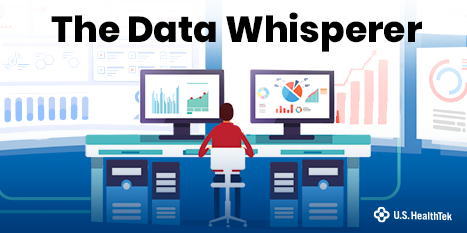The Data Whisperer: True Analytics Are Key to Profitability
I ran across an interesting article about how most healthcare executives don’t trust their organization’s data. Based on a survey by Sage Growth Partners, the data on that data is startling:
“Overall, 80% or more reported that having high-quality data is a top priority and vital to informed decisions. About half believe data integration and interoperability are the greatest barriers when it comes to data analytics, and more than half believe poor data has serious implications that affect decision-making time and the ability to identify gaps in care. Meanwhile, 20% report they fully trust their organization’s data.”
I will add this: even when an executive or manager feels confident about the data, they should wonder if they are in fact getting what they actually need to know out of it.
The “Gotcha”
Requisition volume is up in the lab. Business is good, right? The lab manager looks at the number of requisitions they receive every day and knows the approximate test volume. They are then basing logistic and spending decisions on those volume numbers. But here’s the “gotcha”: You have clients that you’re billing based on the initial number of requisitions. So in that first month of getting Dr. Atchoo as a client, the good doctor is sending around 12-15 requisitions every day. Those are good numbers, profitable numbers … seemingly so. But have all the miscellaneous expenses been figured in? Maybe the doctor has shifted to more expensive kinds of tests. Maybe the work needs to be done at a reference lab, thus is less profitable while retaining all the processing expense. And that 12-15 requisitions number? After six months, it’s 10-12. After a year, it’s 6-8. Oh, and now the tests they are running aren’t the revenue-generating ones they started with.
The data is whispering that Dr. Atchoo is no longer profitable.
Here’s the good news: you can bring all this data together and get the true picture. But the data needs to come from all sides: your billing system, your supply order system, from the lab, even from your sales/customer service department. Algorithms can be built and executed for you with the key component being a dashboard that summarizes the data into a useful format. This would help management to pro-actively manage their clients in real time.
What I see too often is the lab manager being overwhelmed with the day-to-day, and not thinking about the possibilities of all these systems talking to each other. There’s a billing system pulled off shelf A, a courier management system pulled off shelf B, etc. But if you can integrate all those systems, you’ll be able to capture and normalize information into a data warehouse with real-time analytics. This means you can answer these questions, spot these problems, and see beyond the mere numbers of requisitions to real profits.
Cutting the Tail

When you have total command of your data, fewer clients can actually mean higher profits.
Here’s something that happened a while back in Real Life: There was an organization with several labs and a long list of clients. They were getting 10,000 specimen accessions a day – you think, wow that’s great. Now, they must be profitable, right? But when we popped open the hood and started figuring in everything: payroll, maintenance, supplies, and everything else that makes the machine run, some discoveries were made. It turns out every physician wasn’t “equal.” We were able to point out that servicing some of those doctors was actually costing them money. By collecting all the data, filtering it, and building a ranked client list, we were able to show them the accounts that were truly profitable and those that were not. By either upselling or eliminating the unprofitable accounts, you are “Cutting the Tail.” This was a case of having fewer clients at the end of the day, but noticeably better profits.
In terms of profitability, we are all naturally inclined to look at what is happening in the lab today as far as service and volume go. Then it may take 30, 60, 90 days to get paid for that service. That alone makes it harder to drill down on what is happening with a particular client or task, and managers find themselves resigned to making decisions based on macro numbers. But what they need are the analytics, and that involves asking the right questions and doing the necessary work to get down to what is really happening at the client level in real time.
What we recommend is building a data warehouse that interfaces between all your systems and normalizes the data you need in a few well-positioned, accessible dashboards. It requires people who know analytics, who can ask the right questions, and then bring all options to the table. U.S. HealthTek has a breadth of employees and consultants with knowledge and expertise that can facilitate the right combination of data mining that offers long-term benefits, especially for the small- and mid-sized labs.
So the question is, do you have all the right data to make those vital decisions? The data is whispering – it’s just a matter of listening to it.


